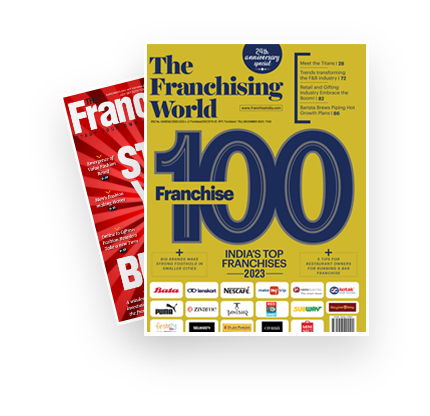
If you’re thinking about launching a perfume brand in India in 2026, you’re in luck—it’s a great time to jump in. People care more about how they smell; they want scents that last, and everyone’s shopping online. And the folks want luxury but don’t always want to pay crazy prices. To get started, you need to pick a business model that fits your budget. You can go with white-labeling (which lets you start fast and cheap), blend small batches yourself, or handle full-scale production. If you want more control and plan to make your own perfumes, you’ll need a cosmetic manufacturing license under the Cosmetics Rules, 2020.
There’s some paperwork that you can’t skip, like registering your business, getting your GST number, and locking in your brand name and logo with a trademark. As for money, you can get up and running for as little as ₹60,000 if you start online with simple branding. If you want a polished look and solid marketing, think more like ₹5–15 lakh.
In this article, we are going to cover how to start a perfume business as well as the investment required and growth. Read this article till the end.
Also read: 15 Profitable FOCO Model Businesses in India
1. Understand the Market Opportunity
.png)
India’s perfume and fragrance market is heating up, and 2026 looks like a great time for new brands to jump in. Just to give you a sense of the scale—in 2024, the Indian perfume market sat at about ₹9,800 crore. If you look at the whole fragrance scene (that’s perfumes, attars, deodorants, and body mists), you’re talking roughly ₹8,300 crore. But here’s the real kicker: people expect the fragrance market to grow fast—around 13–14% every year.
By 2033, it could hit ₹2.7 lakh crore. Perfumes alone should see steadier growth, reaching about ₹1.6 lakh crore by 2033 at 5–6% CAGR. More disposable income, a bigger focus on grooming and self-care, social media hype, and most importantly, a surge in demand from smaller cities. Still, competition’s getting fierce. If you plan to start in 2026, you’ll need a sharp angle—maybe natural ingredients, gender-neutral scents, something with cultural roots, or affordable luxury—to really stand out.
2. Decide your business model
.png)
If you’re thinking of launching a perfume brand in India, how you start makes a big difference to your costs, legal hassle, and how quickly you get to market. The simplest way is white-label or private label. Basically, you buy ready-made perfumes from a licensed manufacturer, slap on your own branding, and you’re in business. You can get going for as little as ₹50,000, maybe up to ₹5 lakh, and it’s the fastest way to launch.
You can set up a small-batch lab—rent a workspace, buy some gear, and start blending. For that, you’ll need a Cosmetic Manufacturing License, plus an upfront investment between ₹3 lakh and ₹15 lakh. If you’re aiming for total control and higher margins, think about building a full manufacturing unit. This means big bucks (₹20 lakh to ₹1 crore or more), lots of paperwork, and some serious equipment. There’s also a different play—start as a D2C or marketplace seller. Sell other brands first, see what works, and then launch your own line. Most beginners go with white-label or small-batch at first and scale up once they know the ropes.
3. Legal & regulatory essentials
.png)
In India, perfumes count as cosmetics, so you have to play by the rules from day one. First, register your business—choose between Sole Proprietorship, LLP, or Private Limited Company, depending on your budget and plans. Once your turnover crosses ₹40 lakh, or if you’re selling B2B or across states, GST registration is a must. If you want to make or even just blend perfumes yourself, you’ll need a Cosmetic Manufacturing License (like Form COS-8) from your State Drug Control Department.
Many newcomers skip this at first and go with licensed white-label partners to dodge the extra hassle and cost. Your packaging has to follow the Cosmetics Rules, 2020—think proper ingredient lists, batch numbers, manufacturer details, MRP, the works. If you want to export, make sure your formulas match IFRA fragrance safety standards. Don’t forget to register your trademark (Class 3) and get any local permits, including state excise approvals if you’ll be storing alcohol-based ingredients.
Licensing & manufacturing specifics
Perfumes are seen as premium in India and are taxed at 18% GST, which hits your pricing and margins right away. Import any raw materials—fragrance oils, bottles, sprayers, packaging—and you’re looking at customs duties too, typically between 10% and 30% depending on what you bring in. You need to keep your accounts, GST invoices, and compliance paperwork in order—slip up here and penalties can hit ₹5,000 or climb into the lakhs, and the authorities can even suspend your business in the worst-case scenario. If you start out with white-label manufacturing, always double-check that your partner holds a valid COS-8 Cosmetic Manufacturing License from the State Drug Control Department.
Taxation & cost considerations
Perfumes sit in the premium category in India, so they attract an 18% GST—that tax hits your pricing and your margins right from the start. If you’re importing raw materials like fragrance oils, bottles, sprayers, or packaging, you’ll also face customs duties, usually between 10% and 30%, depending on what you’re bringing in. Don’t ignore these costs when you’re figuring out your pricing. It’s important to keep your accounts, GST invoices, and compliance records in order. Slip up here and you’re looking at penalties that start at ₹5,000 and can run into lakhs, and in the worst cases, the authorities can suspend your business. If you decide to go with white-label manufacturing, double-check that your manufacturer holds a valid COS-8 Cosmetic Manufacturing License from the State Drug Control Authority. Ask for IFRA compliance certificates and Material Safety Data Sheets (MSDS) for every fragrance you use—these prove ingredient safety and make it much easier to get onto online marketplaces or into retail stores.
Also read: Top 15 Trending QSR Business Ideas You Can Start in 2026
4. Estimate Initial Costs & Financial Planning
.png)
How much you spend to start a perfume business in India really depends on your ambition. If you’re testing the waters with a small, home-based D2C brand, you’re looking at an investment anywhere from ₹60,000 to ₹5,00,000. That covers things like small-batch prototyping, basic bottles and packaging, and setting up your online shop. If you want a more polished launch—with outsourced manufacturing, better branding, and some real marketing muscle—budget between ₹500,000 and ₹1,500,000. This gets you a neat 2–4 SKU line, influencer seeding, and maybe a few offline pop-up events. If you’re going all in, planning to manufacture in-house and push for wider distribution, your budget can easily climb to ₹15,00,000 or even ₹2 crore. This covers everything from equipment and licenses to bigger marketing spends. Major cost buckets include product development (₹50,000–₹2,00,000), batch manufacturing (₹1,50,000–₹5,00,000), packaging (₹60–₹250 per unit), branding and influencer activity (₹1,00,000–₹5,00,000), legal and trademark costs (₹10,000–₹1,00,000), and logistics or unexpected expenses (₹50,000–₹2,00,000).
5. Product Development, Branding & Packaging
.png)
The Indian perfume market is growing steadily, thanks to a growing focus on grooming and a taste for premium products. In 2024, the market was valued at ₹9,800 crore, and it’s expected to grow at about 5.5% a year through 2033. When you build your product line, pick your category: Attar (oil-based), Eau de Parfum (EDP), Eau de Toilette (EDT), or body mists. Each one has its own price point and audience, mostly because of the concentration of fragrance oil. EDPs (15–20% oils) work for mid-premium and premium buyers, while body mists (1–4%) are aimed at the mass market. Most new brands start with one to three signature fragrances in 30 ml to 50 ml bottles, plus some sample sizes, which helps keep inventory under control and makes marketing easier. Bottle and packaging costs usually fall between ₹60 and ₹250 per unit, depending on the quality and customization. If you’re importing pumps, oils, or bottles, remember that 10%–30% import duties will apply. And before you launch, run basic stability tests (which cost about ₹5,000–₹25,000) to make sure your perfumes don’t discolor or change scent over time.
6. Branding, marketing & go-to-market
.png)
Your brand story matters—a lot. Carve out a unique position: maybe you focus on Indian heritage ingredients like sandalwood and attar, clean or vegan formulations, affordable luxury, travel minis, or custom gifting. Go digital-first. Launch your own website, list on marketplaces like Nykaa and Amazon, and build your brand on Instagram Reels and YouTube Shorts. Set aside a marketing budget—anywhere from ₹30,000 to ₹300,000 a month, depending on your goals. Fragrance is all about experience, so invest in micro-influencer partnerships and sample kits. Those mini-sample packs cost ₹80–₹200 each to make but usually convert way better than direct ads. Offline, try pop-up displays in salons, boutiques, or co-working spaces—these usually run ₹5,000–₹40,000 per event. Don’t ignore bulk orders from corporate and wedding gifting. Keep an eye on your numbers: Customer Acquisition Cost (CAC), Average Order Value (AOV), repeat purchase rate, and inventory turnover. These will help you tweak your strategy and stay profitable.
Also read: 21 Successful E-commerce Business Ideas in India
7. Supply chain & operations
.png)
When you’re ready to launch, work with at least two trustworthy manufacturers so you don’t get stuck if one has issues. Both should have a COS-8 Cosmetic Manufacturing License, plus IFRA and MSDS documents for safety. Line up three packaging suppliers for bottles, pumps, and boxes—costs here will run you ₹60–₹250 per bottle, depending on the design. For nationwide shipping, team up with a 3PL logistics company and budget about ₹25–₹80 per shipment, based on size and destination. Start simple with a minimum viable product—maybe one or two signature scents with a strong, clear positioning, like premium daily-wear perfumes for professionals.
8. Launch Strategy & Growth
.png)
Months 0–3: Focus on groundwork—finalize fragrance concepts, select and onboard manufacturers, build your brand identity, complete business and legal registrations, and set up your online store.
Months 3–6: Produce a pilot batch of around 1,000–2,000 units, begin sampling and collaborations with influencers, and roll out a soft launch through your own D2C website and selected marketplaces to gather early feedback.
Months 6–12: Evaluate sales performance and customer responses to determine which scents and formats are resonating. Gradually expand your product range, explore boutique placements, retail tie-ups, and corporate gifting opportunities, and plan seasonal promotions around high-demand periods such as Diwali and wedding season to scale brand visibility and revenue.
9. Key Risks & Considerations
.png)
- Regulatory Compliance:
Ensure the manufacturer has valid CDSCO licenses and all labels follow cosmetic standards. Non-compliance can lead to penalties or product recalls. - SKU & Inventory Management:
Avoid launching too many variants early. Start lean to prevent overstocking and cash flow issues. - Counterfeit Risk:
The perfume market often faces duplicate/clone products. Protect your brand through trademark registration, batch codes, and authenticity seals/holograms. - Raw Material Price Fluctuation:
Costs of fragrance oils, bottles, pumps, and packaging may vary due to foreign exchange and supply chain delays. Work with reliable suppliers and plan buffers. - High Competition:
Many new D2C brands are entering the fragrance space. Strong positioning and a unique brand story are critical to stand out. - Marketing Cost Pressure:
Digital ads can be expensive, so focus on organic content, UGC, influencer marketing, and sampling. - Inventory & Shelf-Life Considerations:
Perfumes have a relatively long shelf life, but poor storage or heat can affect scent stability. - Need for Continuous Compliance:
Regulations and labeling norms can update—stay informed to maintain trust and brand reputation.
Final note
Starting a perfume business in India in 2026 offers a promising opportunity for entrepreneurs who can combine creativity with strategic planning. With increased customer interest in luxury yet inexpensive perfumes and the rapid expansion of online shopping, new brands have the chance to stand out by offering unique scent profiles, appealing packaging, and relatable storytelling. However, success in this industry requires more than just good fragrances. It is critical to adhere to the necessary legal and regulatory rules, choose the right business model, source quality raw materials, and invest in consistent branding and marketing. Beginning with a limited product range, testing market response, and gradually scaling helps reduce risk and manage costs effectively. Starting with a small product line, strong brand positioning, and a focus on customer experience, a perfume business can grow into a profitable and sustainable venture that resonates with India’s evolving lifestyle and grooming culture.
You might also like: Top 15 Sustainable Service-Based Business Ideas in 2026

